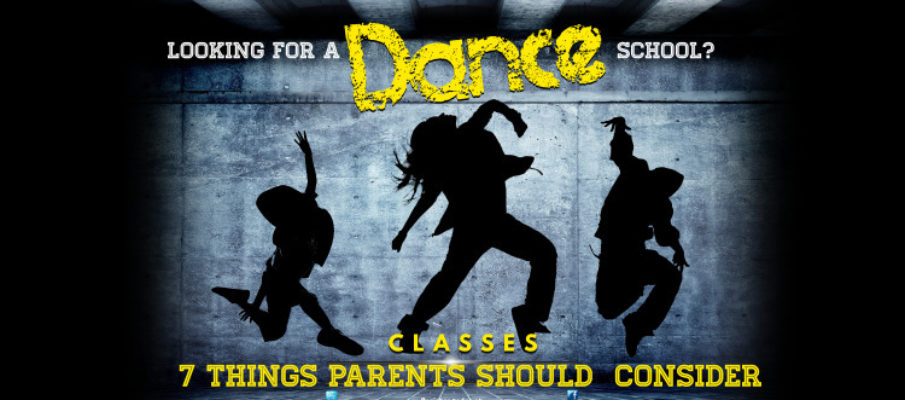What should you do if your child exhibits an interest in pursuing a career as a professional dancer? The first step is to enroll your child in a recognized dance school; however, as many other parents have realized, finding a good dance school is not the same as finding superb formal schools. Choosing a dance school or teacher for your child might be tough. There are hundreds of studios and classes to choose from. Some people take up dance as a recreational activity, while others use it as a method of professional development, fitness, or social connection.
Aren’t most dancing studios the same if they all seem to have certified, nice teachers, experience teaching youngsters, and a huge concert at the end of the year? Does it really make a difference where you enroll? Yes. There are seven primary factors that might influence the quality of teaching your child receives, the quantity of additional labour “and difficulties the parents must cope with,” and the overall happiness and satisfaction of participating in a dance programme. Here are five things every parent should think about when choosing a dancing studio for their child.
1.What is the size of the classroom? Is it possible for you to attend a performance by your child?
For a more personalised training experience for each child, smaller dancing schools are always the better option. Teachers can keep a closer eye on each student, have more control over teachings, and allow children to learn more while having fun because of the small size. Each child will receive more customized attention, learn more, and have more fun if the dancing class has fewer individuals.
When the students are younger, it is easier for a teacher to maintain control of the class and guarantee that each student understands the ideas and directives. Because of our small class sizes, no essential suggestions go unnoticed. Because of the smaller class size, our teachers can also ensure that students do not develop bad habits or improper technique.
Another thing to think about is whether or not you’ll be able to watch your kids perform. Many studios have two-way mirrors, which allow parents to see their children dance without disturbing them; this is useful for tracking your child’s development.It is simpler for a teacher to retain control over the class and ensure that each student understands the ideas and directions when the kids are younger. Our limited class sizes ensure that no important ideas are overlooked. Our professors can also guarantee that pupils do not develop poor habits or inappropriate technique because of the lower class size. If you are looking for an authentic dance school in Asansol you should esquire about that.
2. What kind of dancing floor is it that they’re using?
Dancing necessitates a lot of jumping and strenuous physical motions, which can put your child’s bones and joints under stress. Because most dance footwear does not provide cushioning, enrolling in a dance school with sprung floors is the best option. Dance is a physically demanding exercise that involves a lot of hopping, which can cause bone and joint stress. Choosing a studio with a professional “floating floor” is the safest approach to avoid potential damage. A floating floor is a dancing floor that is supported by a specifically engineered system that softens the impact of leaping while also reducing or eliminating tiredness.
It’s also worth thinking about the floor’s surface. Vinyl composite flooring is the internationally acknowledged surface layer for recreational and professional dance studios because it allows dancers to slide with a degree of “controlled” slip while being non-slip, reducing the danger of slips and falls.The dance floor’s top layer plays a significant role as well.
The ideal surface layer for leisure to professional dancing is a patented vinyl composite floor, which is acknowledged internationally. These sorts of flooring are used by the Royal Winnipeg Ballet, the Royal Academy of Dance in London, the American Ballet Theatre, and a slew of other dance companies. This one-of-a-kind surface allows dancers to slide with a degree of “controlled slip,” but it isn’t slick, so there’s less chance of falls. Due to the high cost of these flooring, few few studios employ them, preferring instead to use normal floor tiles.
3. Are the instructors certified? What types of dance do they teach?
Dance instructors are not required to be licensed in many regions of the world. This permits anyone with dance experience to pass as a certified instructor, which might be harmful to your child. To guarantee that your child receives the greatest education possible, inquire about the backgrounds of the teachers at your dance institution. Our dance instructors are all certified to turn your child into a professional dancer.
4. During a lesson, how many teachers are present?
A studio should have more than one teacher to ensure that each child receives the attention they require. Having many instructors or assistants ensures that each learner is observed, assisted, and corrected at all times, increasing their learning experience.
5.How good is the studio’s customer service?
Life is unpredictable, and events unfold at a breakneck pace. It would be in your best interests to keep up with the latest news from your preferred studio. To guarantee that your child is always kept secure, you’ll want to have a direct line of communication with the studio’s supervisors.
6.WHAT IS INCLUDED IN MY FEES?
It’s critical to know what you’re paying for when comparing costs. Test admission costs, exam preparation workshops, and accompanist fees, for example, are all common extra expenditures that you will certainly incur. Some of the prices for your end-of-year showcase or recital outfit are flat rates, while others are only a deposit. You will be required to pay for any additional charges that emerge while making a deposit. There will be no unpleasant surprises when you pay a fixed rate! Determine the return rules, as some colleges may not offer refunds.
7. CAN I GET ASSISTANCE AND CUSTOMER SERVICE IMMEDIATELY?
Many studios have lessons and administration run by the teacher or the studio owner. When a teacher tries to do two jobs at once, the class may suffer as a result of the instructor having to utilise class time for customer service concerns, or the studio may not be able to provide customer support while the teacher is in a class. It is essential to select a studio that can assist you with things such as costumes or timetables, even if a teacher is busy in a class, in order to have a positive experience. During regular class times, our studios have office personnel on hand to provide prompt help.

